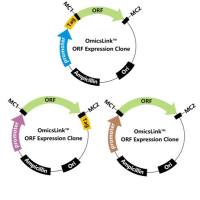Antisense Strategies for Treatment of Heart Failure
In the mammalian heart, intracellular Ca2+ movements are tightly regulated at various levels within the cell (1 ). The sarcoplasmic reticulum (SR) plays an important role in orchestrating the movement of calcium during each contraction and relaxation. Excitation leads to the opening of voltage-gated L-type Ca2+ channels, allowing the entry of a small amount of Ca2+ into the cell. Through a coupling mechanism between the L-type Ca2+ channel and the SR release channels (ryanodine receptors), a larger amount of Ca2+ is released, activating the myofilaments leading to contraction. During relaxation, Ca2+ is reaccumulated back into the SR by the SR Ca2+ adenosine triphosphatase (ATPase) pump (SERCA2a) and extruded extracellularly by the sarcolemmal Na+ /Ca2+ exchanger. The contribution of each of these mechanisms for lowering cytosolic Ca2+ varies with species. In humans, approx 70% of the Ca2+ is removed by SERCA2a and approx 30% by the Na+ /Ca2+ exchanger (1 ). The Ca2+ pumping activity of SERCA2a is influenced by phospholamban. In the unphosphorylated state, phospholamban inhibits the Ca2+ -ATPase, whereas phosphorylation of phospholamban by cyclic adenosine monophosphate (cAMP)-dependent protein kinase and by Ca2+ -calmodulin-dependent protein kinase reverses this inhibition (2 ). Ca2+ transients recorded from failing human myocardial cells or trabeculae reveal a significantly prolonged Ca2+ transient with an elevated end-diastolic intracellular Ca2+ (3 ,4 ).
![预览]()






